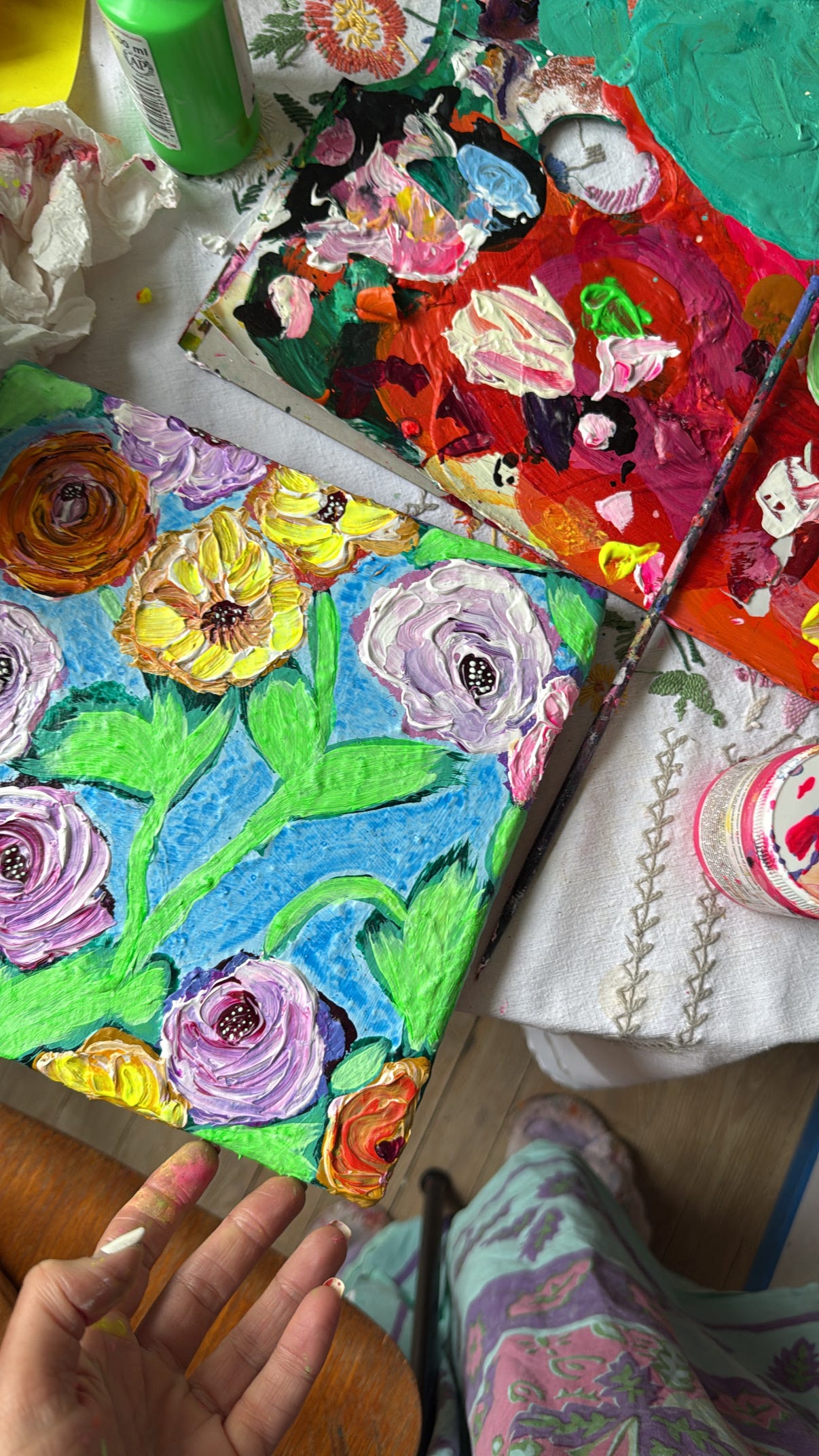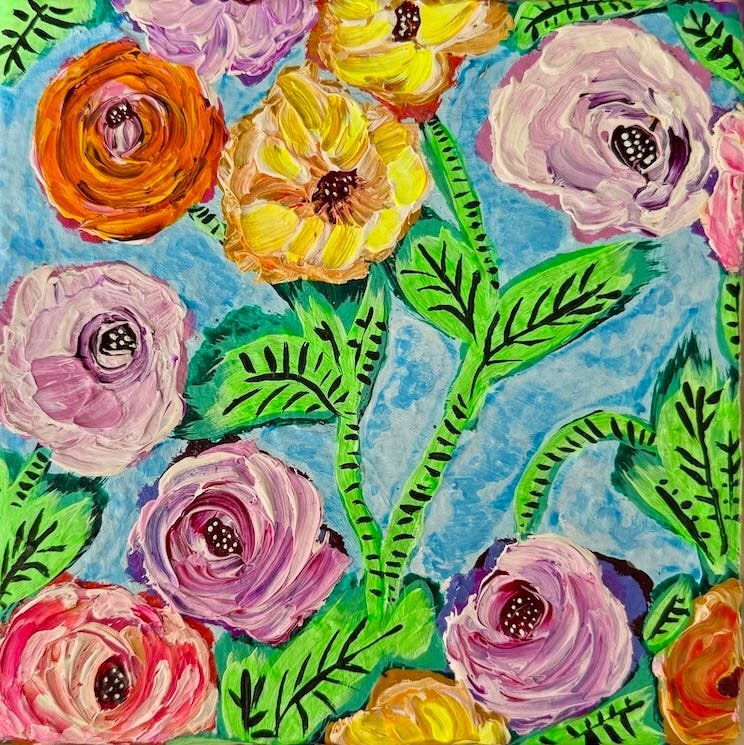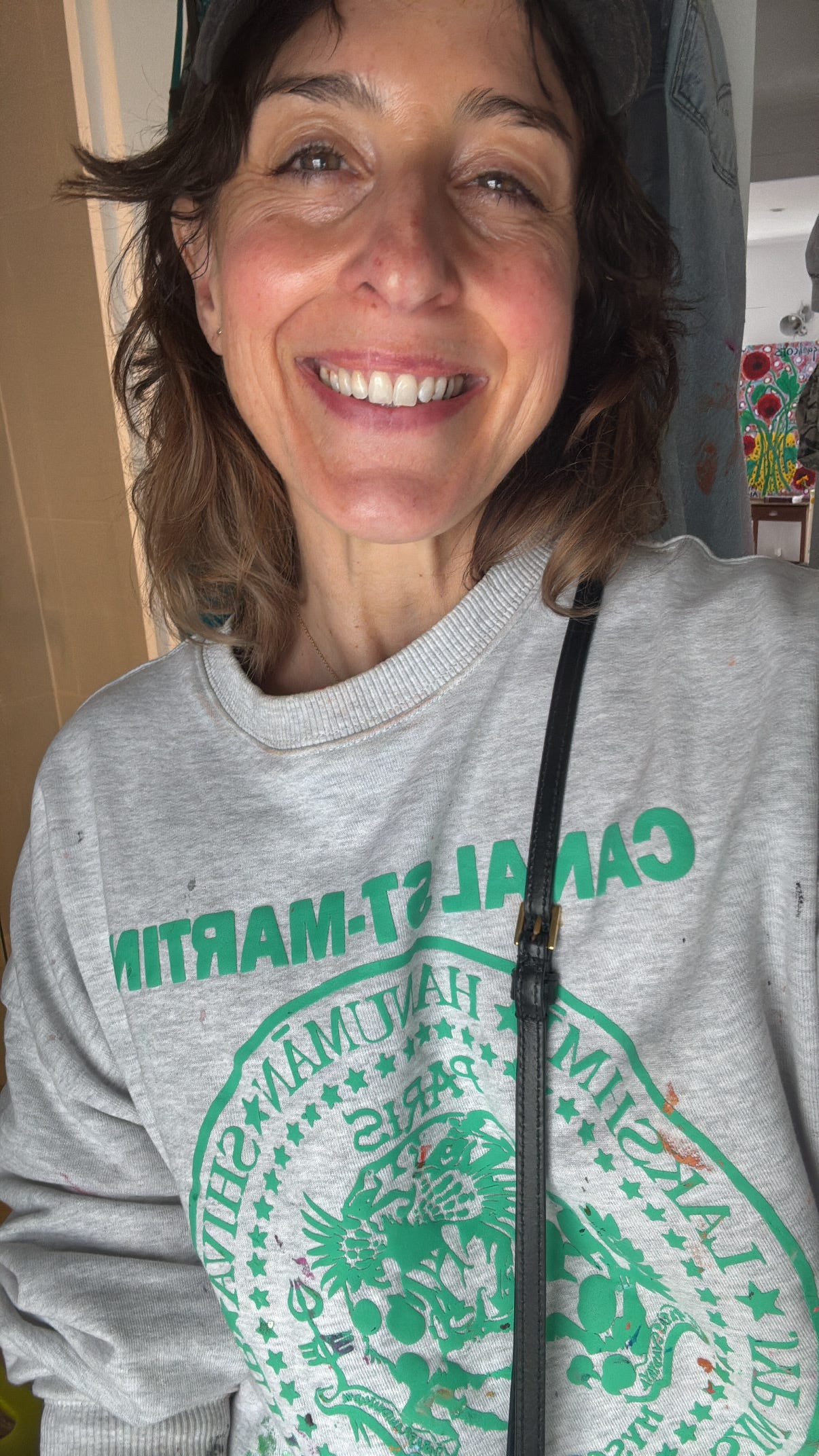The Years I Lost to Grief — and How Joy Finally Found Me
It wasn’t only time or therapy that shifted me, but something far simpler and closer to home. A story of sudden loss, anger, and the unfinished work of becoming whole.
Yesterday in my studio, I was in my usual uniform: paint-splattered pants, an old t-shirt, barefoot. I was painting frames and prepping canvases for a group show I’ll be part of in the US later this year. Music played in the background, and when a Modest Mouse song came on, time folded in on itself.
Suddenly it was 2004, and I was 25 again, sitting on a plane bound for Colorado with my turquoise Sony Discman in my lap, listening to a mix CD a friend had made me for the trip. As we descended, the Rockies came into view — endless, snow-covered, bigger than anything I had ever seen. In that moment I felt something precise, almost physical: my life was about to change in an irrevocable way. I didn’t know how, only that it would. Six months later, my mother died, and the gravity of that knowing became clear. It was the turning point. Nothing in my family — or in me — was ever the same.
I’ve lived 21 years without her, and 11 without my father, who died ten years and ten days to the date of her passing — an eerily unreconcilable detail for me. Both of their deaths were sudden. No planning, no vigil, no time to say goodbye. Just one day, the sharpness of death sliced down on my life, twice over.
Life after that couldn’t be lived in any neat or normative way. The ground itself had shifted, and nothing about the years that followed was straightforward. I lived a messy life in their absence — clawing forward, only to fall back. Grieving them wasn’t only about missing them, or about love. It also meant facing the harder truths: the wounds of trauma, neglect, and emotional abuse. It’s hard to admit, because they were my parents, and if you knew them, you probably loved them. But both things are true — they could be loved, and they could hurt me.
In those years, I made countless starts toward healing, only to sabotage my way back into mourning. I learned to abandon myself at an early age, and I kept retelling that story — of leaving myself, of being left — again and again, until I finally began to find a different ending: until I learned to stay. To stay in my feelings, in my body, and in the safe fold of the present moment.
And meanwhile, life kept happening — other heartbreaks, other losses, other traumatic events. For a long time, it felt like there was always something new to recover from, and my plate was too full to hold it all.
It took years of sifting, of deciding what pain needed my attention first. And even then, it took more time — time I didn’t want to give — before all that was left was me.
But healing wasn’t only about what I had to let go of. It also taught me endurance, perseverance, and the quiet bravery of trying again after failing. I discovered courage in facing what I once thought would break me, and in choosing — over and over — to keep going anyway. Living, and intentionally parsing through these things, also showed me the places where I lacked belief in myself. And the moment I shed light on that, growth came at light speed.
Of course, I didn’t always meet pain directly. I tried to outrun grief with busyness, outwork it through constant striving, and outlove it by leaning too hard on relationships that couldn’t hold me. I leaned on fitness, on shopping, on friendships, and on alcohol — ways of numbing or distracting myself, temporary shelters that held for a time but always collapsed under their own weight.
In 2023–2024, I spent a year intentionally sober, and that year opened me up to looking at other patterns in my life that needed healing — with curiosity, compassion, and love. It was the springboard for so much change, and for a deeper relationship with myself. It taught me, ultimately, that I was deserving of a life — this life — and that I was safe, and could stay.
Now, I call myself sober-curious — not fully sober, but deeply attentive to the ways drinking once numbed me, delayed healing, or let me bypass the work of being with myself. Living this way, with more integrity and presence, allows so much awareness to surface — awareness I could never access when I was still in hiding.
Building a life without parents has meant missing out on moments I once imagined: a father walking me down the aisle, calling my mom with good news, hearing her voice when I felt lost. And there are the quieter absences too — my dad making sure I had warm socks, my mom’s arms around me without question.
But in their absence, I’ve had to grow a different kind of presence. Over time, I began to see them not only as parents who failed me in certain ways, but as two imperfect people, just trying to live their lives. That shift gave me compassion — for them, and eventually for myself. Slowly, I’ve built an identity not defined by trauma or neglect, but by the choices I make today: art, writing, curiosity about sobriety, integrity, love.
And much of that transformation has happened in the studio. Last week, while painting, a clear knowing arrived: I didn’t want to be angry anymore. I had been angry about so many things — their deaths, our family traumas, the years I lost to grief and survival, the injustices I carried (real and imagined), and at myself.
Then something amazing happened. A giant weight lifted — one I had been pressing down on myself for years without even realizing it. It wasn’t therapy or time that shifted me in that moment, but something far simpler: being present with my own hands, my own canvas, my own life. A sudden embodied clarity surfaced, and my eyes seemed to open wide and brighter than before, as if taking in life for the very first time — and trusting it.
For so long I lived in a state of hypervigilance, afraid I wasn’t safe — that more bad news was always waiting around the corner. When both of my parents died suddenly, it carved into me a belief that life could only take, that the ground might give way at any moment. I braced myself for impact instead of letting myself rest.
What I see now is different. Life does break us open, sometimes without warning. But it also gives. It shifts, it softens, it surprises. Storms arrive, but so do seasons of calm. What comes, comes. What goes, goes. And through it all, I remain.
Joy, ease, and happiness aren’t punishments or traps; they are my natural resting states. And they were waiting for me all along.
Now I’m stepping into an identity beyond pain, and I’m meeting that with curiosity. What does it mean to live not from the edge of fear, but from the center of joy? What becomes possible when pain isn’t the only lens? These are the questions I’m asking now.
And isn’t it wonderful, really — to keep living a life and telling a story with our lives? To echo the great Mary Oliver: Tell me, what is it you plan to do with your one wild and precious life?
Healing, I’ve learned, takes the time it takes. In my story, more than 20 years. And from where I stand, I’m so glad I didn’t give up. The pain hasn’t vanished, but I’ve grown around it. Instead of overshadowing me, it’s become part of the landscape I live within.
Wholeness, for me, isn’t about arriving at some perfect or polished version of myself. It’s about living in the ongoing, unfinished space of becoming. Sometimes it’s terrifying, sometimes exhilarating. But it’s mine.
So when that Modest Mouse track carried me back, I felt the strange overlap of who I was and who I am now: a young woman in 2004, sensing change without knowing what it would cost, and a woman in her forties — barefoot in her studio, prepping canvases, still aware that life can and will change again.
If any of this resonates with you — if you’ve grown around your own losses, or found ways to step into joy after grief — I’d love to hear from you in the comments. These stories matter, and they remind us that none of us are as alone as we sometimes feel.
✨ Free download for paid subscribers below — a piece of art from my studio to accompany this essay. Just follow the link to download and enjoy! Just click on the link, and your email will unlock the download!
Please enjoy this art piece “Toute Vie est une de Creation” (All of Life Is a Creation). The work was painted for the 10 x 10 Exhibition opening this November at the Jackson Junge Gallery in the Wicker Park neighborhood of Chicago.
Thank you for being here. Mwah!








“Wholeness, for me, isn’t about arriving at some perfect or polished version of myself. It’s about living in the ongoing, unfinished space of becoming. Sometimes it’s terrifying, sometimes exhilarating. But it’s mine.” What beautiful insight—this entire piece, but this really resonated. ❌⭕️
💖💕🌈🌸